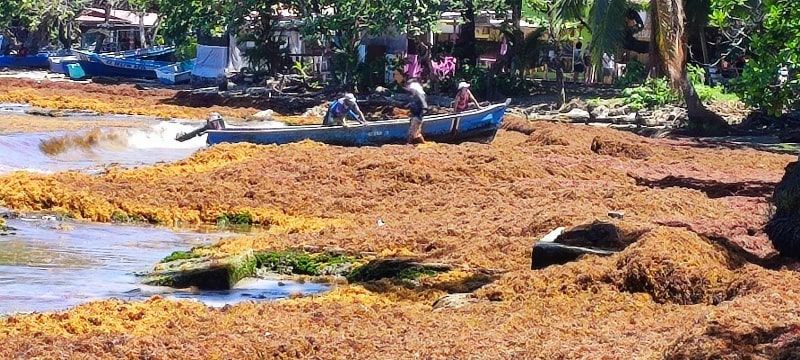Latest on sargassum seaweed in Costa Rica 2022
A new wave of sargassum has reached the beaches of the Costa Rica Caribbean. It is a seaweed that, when decomposing, produces hydrogen sulfide, which can irritate the eyes and respiratory tract and, in large concentrations, can be toxic. In large concentrations, it can be toxic.





